Unfortunately this blog entry is not available in English. The german article is available here: https://www.tinkerforge.com/de/blog/warp-charger-auch-mit-75m-ladekabel-erh%C3%A4ltlich/
Blog
WARP Charger auch mit 7,5m Ladekabel erhältlich
Bastian Nordmeyer - 4 years, 6 months ago
WARP Charger - Eine Tour durch die Software
Olaf Lüke - 4 years, 6 months ago
Unfortunately this blog entry is not available in English. The german article is available here: https://www.tinkerforge.com/de/blog/warp-charger-eine-tour-durch-die-software/
Industrial Bricklets with new 8 pole connector
Nicolai Jakob - 4 years, 7 months ago
For many years we used pluggable spring clamp terminal blocks for our Industrial Bricklets. When these blocks are used with the correct wire (correct wire gauge), they are really easy to use. But if the wire has a small diameter or it is a stranded wire a screw driver has to be used to connect the wire to the terminal block. Sometimes that is not easy and we often got the feedback that our users would rather use screw terminals. Because of that we are now shipping the Industrial Bricklets with a new type of screw clamp terminal block connector. As the name suggests the wire is connected with a screw type terminal block. The spring type connector is still available in our shop.
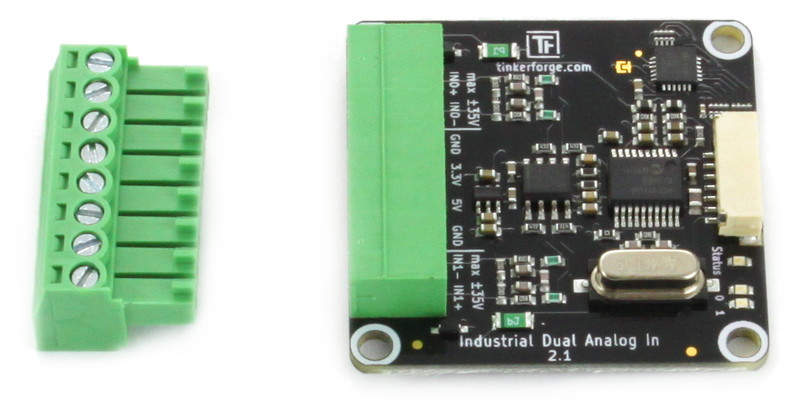
WARP Charger
Olaf Lüke - 4 years, 7 months ago
There was relatively little activity in our blog lately. In this time we were not inactive, to the contrary, we are working on many new products that we want to introduce in the near future. Today we will start with something unusual.
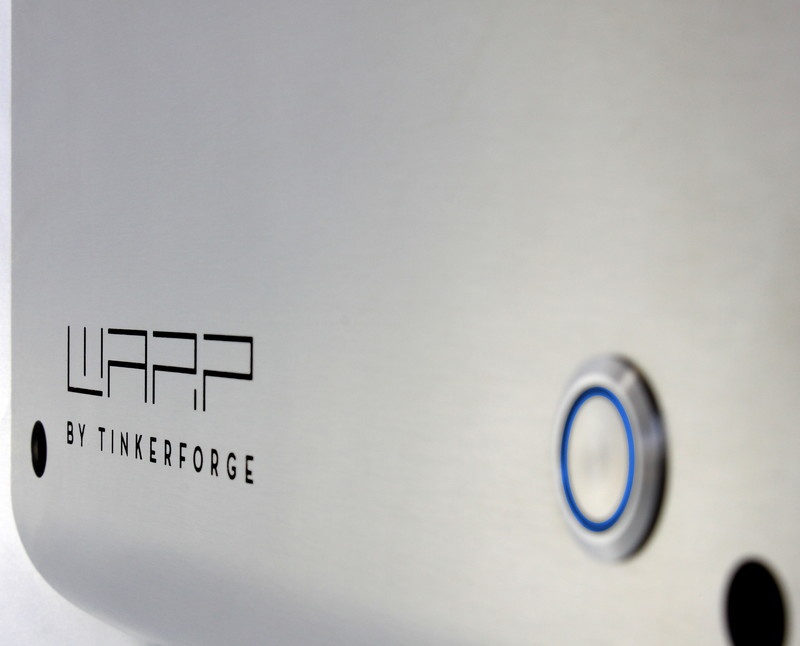
Tinkerforge is engaged in the e-mobility field for a long time already. It began wit the SM!GHT project, where we helped to develop sensors and EV chargers within streetlights. For this project we did not work on the actual charger circuitry, but it was our first contact with the field. In the end of 2019 we purchased our first company EVs. With a fleet of five company EVs the topic of electronic vehicle charging became even more interesting for us.
There are many providers for wallboxes. Most of them are offered by big multinational companies. Open source, durability and access for the customer are often foreign words for these companies. On the other site there are open source hobbyist projects. It is of course impressive what people can develop in there free time, but we found that these projects are nearly always lacking in safety and conformity to standards. We could not use any of these projects as a foundation for a commercial product.
Because of this we decided to develop something ourself.
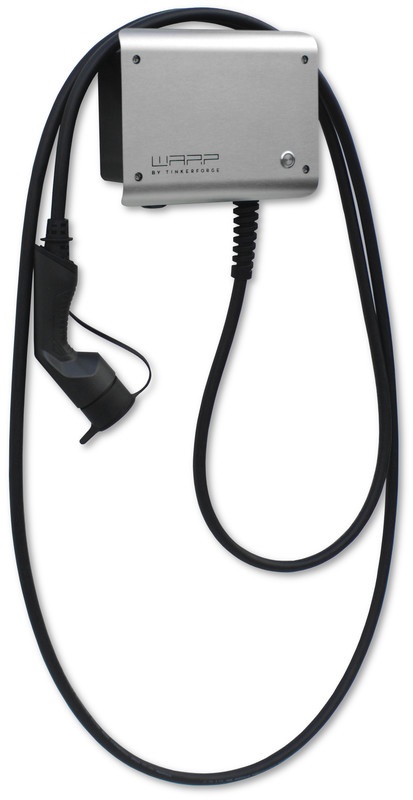
With the new EVSE Bricklet (coming soon) we developed a EN 61851‐1 conform charging controller (EVSE) from scratch. We will describe more technical details in a separate blog entry. This controller is the first Bricklet that can be used stand-alone. This means that it can be used without connecting a Brick to it. It is of course possible to connect a Brick to read out data and to control the charging, but it is not necessary. The EVSE Bricklet can be used to charge an electric vehical with AC voltage through a Type-2 connector. It was important to us that we support all of the EN 61851-1 safety features. The Bricklet will permanently check the grounding and it will check every switching operation of the contactor. The Bricklet can detect if the contactor doesn't switch or if it sticks in the switched position.
A DC residual current protection that protects from DC voltage fault current is required by law. To achieve this we use a third party module that detects the DC fault current and triggers the normal 30mA Type A RCD. This module works by introducing an AC fault current if a DC fault current is detected.
We exploited some synergy effects with our project to introduce C/C++ Bindings for microcontrollers. We will officially introduce these with a new blog entry soon. You can already find some Information and a beta in our forum. Additionally we will release our new ESP32 Brick shortly. As the name suggests it uses a powerful microntroller with WIFI of the type Espressif ESP32 (ESP32-WROOM-32E).
With these new capabilities we were able to develop an affordable WIFI-capable wallbox that has a very high standard of safety and also conforms to all of the legal requirements.
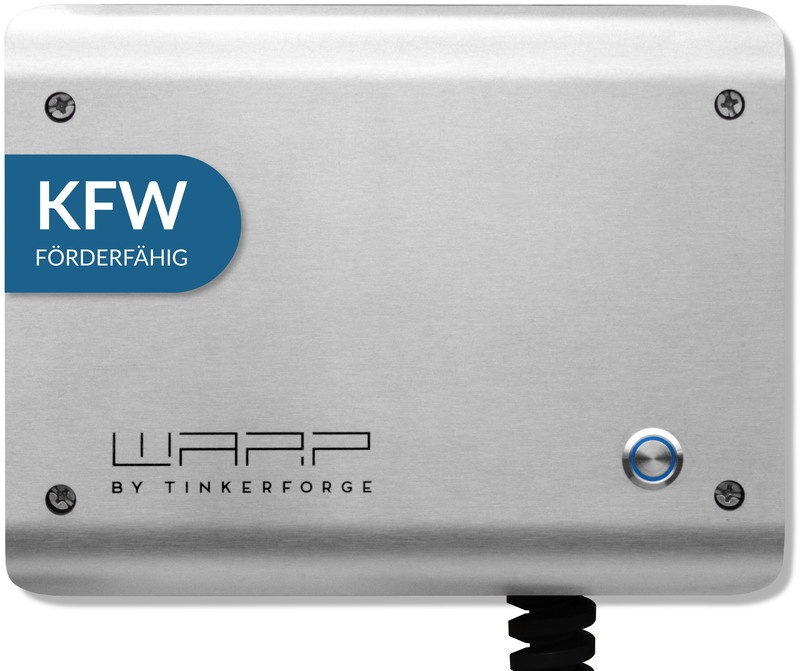
Most wallboxes use a relatively thin-walled ABS enclosure. For our first prototype we also tested with ABS and polycarbonate enclosures, but we always had the feeling that the quality was lacking. When we tried out the first fibreglass-reinforced polyester enclosure we knew immediately that we wanted to use it for the wallbox. With dimensions of 160mm x 260mm x 91mm the enclosure by itself already weighs 1.7kg. It has a wall thickness of 6mm. The enclosure is of course waterproof and UV-resistive. To add some visual candy wie mount a 1.5mm thick stainless steel front to the top of the enclosure. The front can be laser engraved with a customer specific logo.
We named our wallbox "WARP Charger". WARP stands for "Wall Attached Recharge Point". Compared to most other solutions we do not mount the complete charging electronics on a single circuit board, instead we DIN rail mounted modules. We think this makes most sense, since the user of the wallbox has some modularity available. The contactor of a wallbox is the part that switches on the power for charging of an electric vehicle. This is a mechanical part that will have to endure lots of switching operations. If the contactor is part of an integrated "one-circuit-board" solution it can not be replaced. A DIN rail mounted contactor on the other hand can easily be replaced by any electrician. Most wallboxes use a 40A contactor, which is just enough to switch 32A (at 22kW). We also saw even smaller variations in 11kW wallboxes. Independent of the wallbox type we will always use a 4-pole 63A contactor to increase the durability.
The WARP Charger is available in three versions: Basic, Smart and Pro. You can find an extensive description on the shop pages. Currently we don't have an documentation website, but you the PDF manual is available on the shop pages as well.
All three versions use the same enclosure, which has a button with a blue status LED. The button can be used to stop an active charging process. Additionally there is a key switch at the bottom of the box, it can be used to completely turn the wallbox off. All wallbox versions are available as 11kW and 22kW models. The difference between the 11kW and 22kW versions is the utilized type 2 charging cable. The 11kW version uses a cable with 5x2.5mm² cross section and the 22kW version uses a cable with 5x6mm² cross section, which makes the cable significantly thicker.
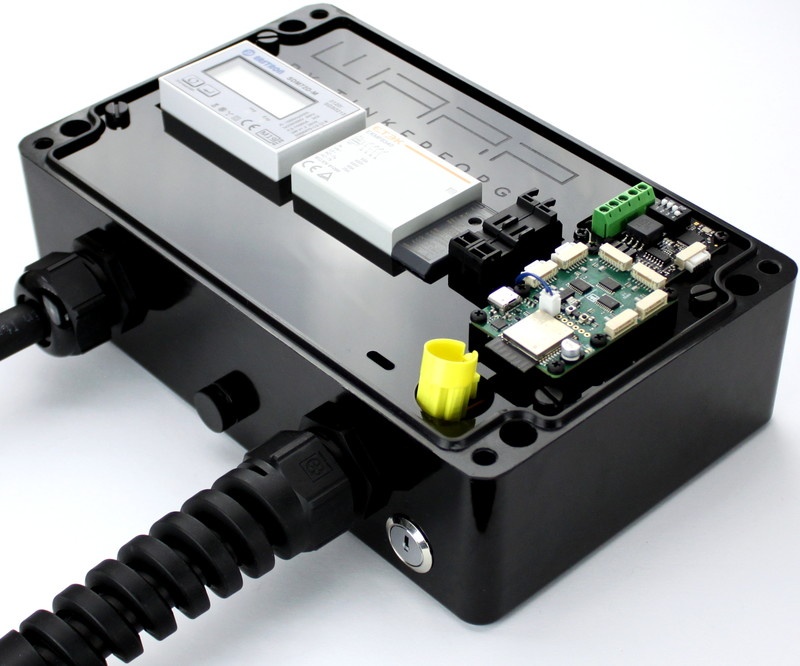
The WARP Charger Basic is equipped with an EVSE Bricklet, which runs stand-alone. This version of the wallbox can charge EVs. Status and error information are shown by the blue LED. The charging current of the wallbox depends on the supply cable and the configuration of the EVSE Bricklet (via slide switch).
The WARP Charger Smart has an additional ESP32 Brick. Through the Brick the wallbox can be configured over WiFi. The maximum charging current can be reduced further through the web page of the wallbox. It is possible for the user to decide at which point the car is supposed to charge slow or fast. The wallbox can be remotely controlled through MQTT and connected to home automation systems (OpenHAB, FHEM, ioBroker, etc).
The WARP Charger Pro is build upon the Smart version and it additionally has a calibrated bidirectional polyphase meter that can be read out by a RS485 Bricklet 2.0. The web page of the wallbox will additionally show measurements and statistics. The data can also be read through the MQTT interface of the wallbox.
The versions Smart and Pro can receive the sponsorship through KfW 440. You can also order the 22kW version, if the electrician configures it to 11kW.
WARP Charger Basic and Smart is available iin 11kW and 22kW as well as with or without a supply cable with CEE connector. The version without CEE connector can be connected by an electrician with internal DIN rail terminal blocks. The Pro version is a bit different. Since there is an additional meter within the enclosure, a direct connection inside of the box is too cumbersome for an electrician. Because of that we always deliver the Pro version with a 2m long external supply cable already connected. You can choose between this open cable and a cable equipped with CEE connector.
As you know it from Tinkerforge, the hardware and software is open source. The wallbox can already be pre-ordered, we will start delivery at the beginning of January 2021. The software is currently still in development. First screenshots are already available in the manual. The majority of features is already implemented, but we still need to fine-tune the look.
At the beginning the wallboxes will come with the aforementioned features. Technically there is however much more possible and we will constantly update and add new features. The community can of course help! One of the items on our list is for example to implement proper load management between several WARP Chargers.
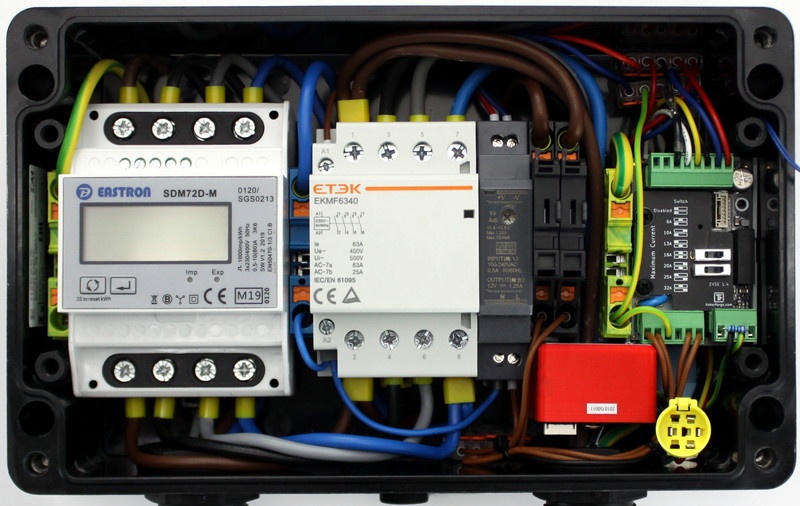
Stay tuned. We will write more about this soon!

